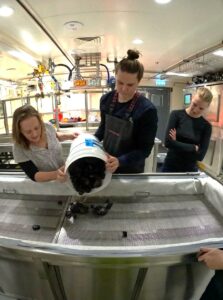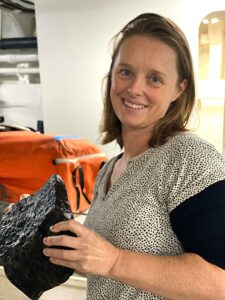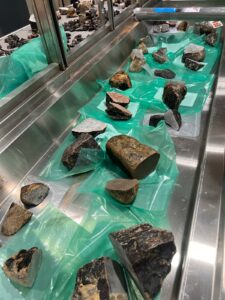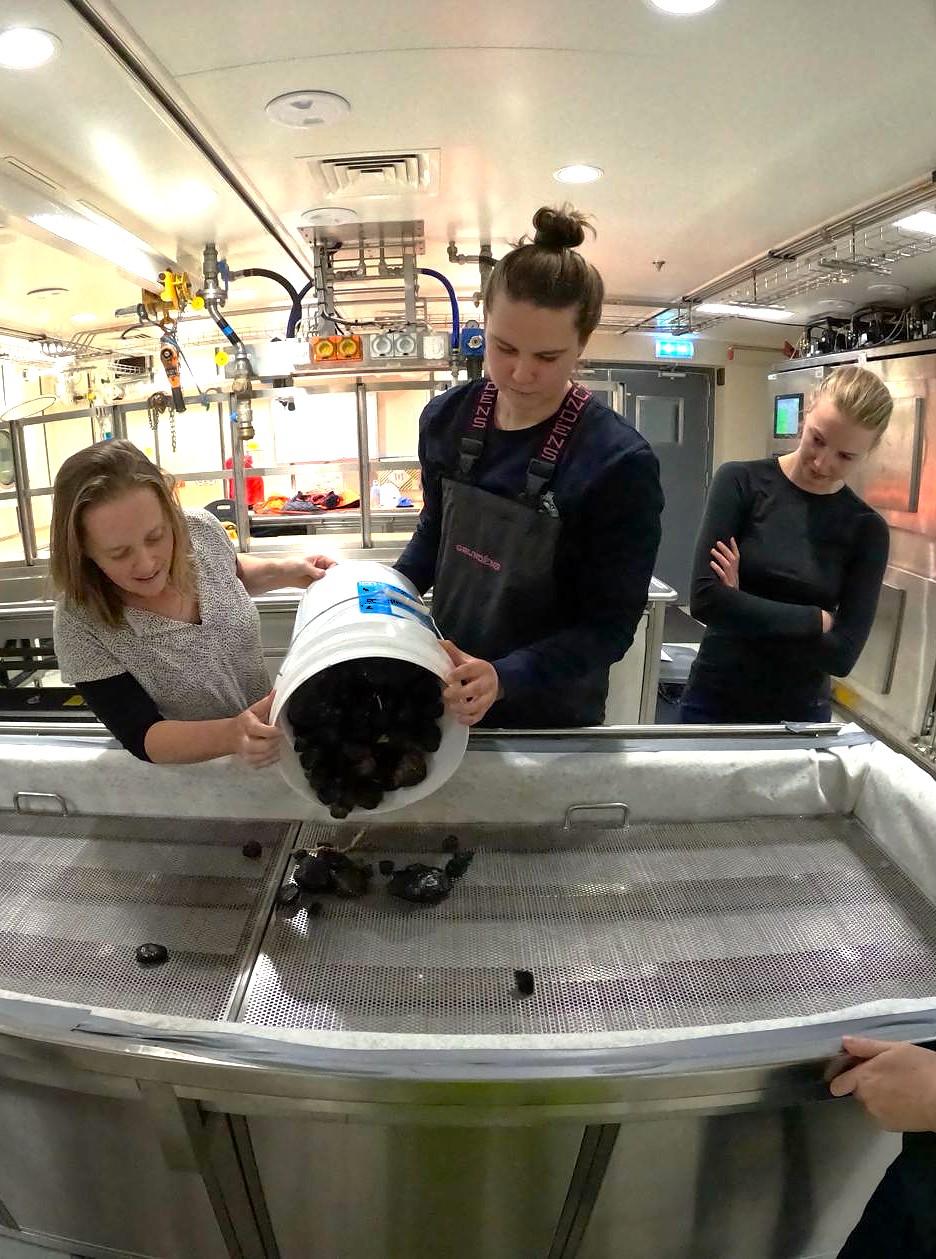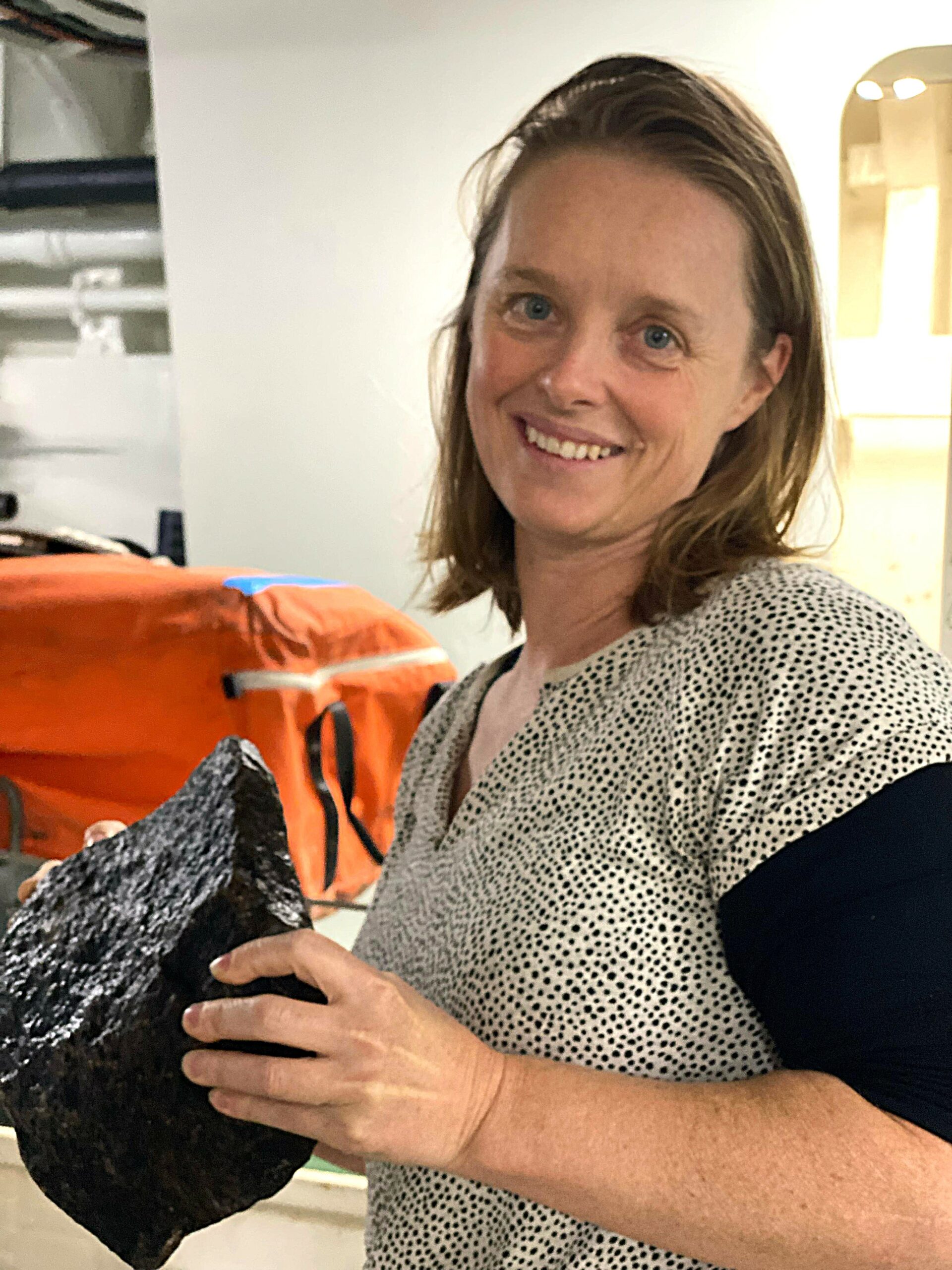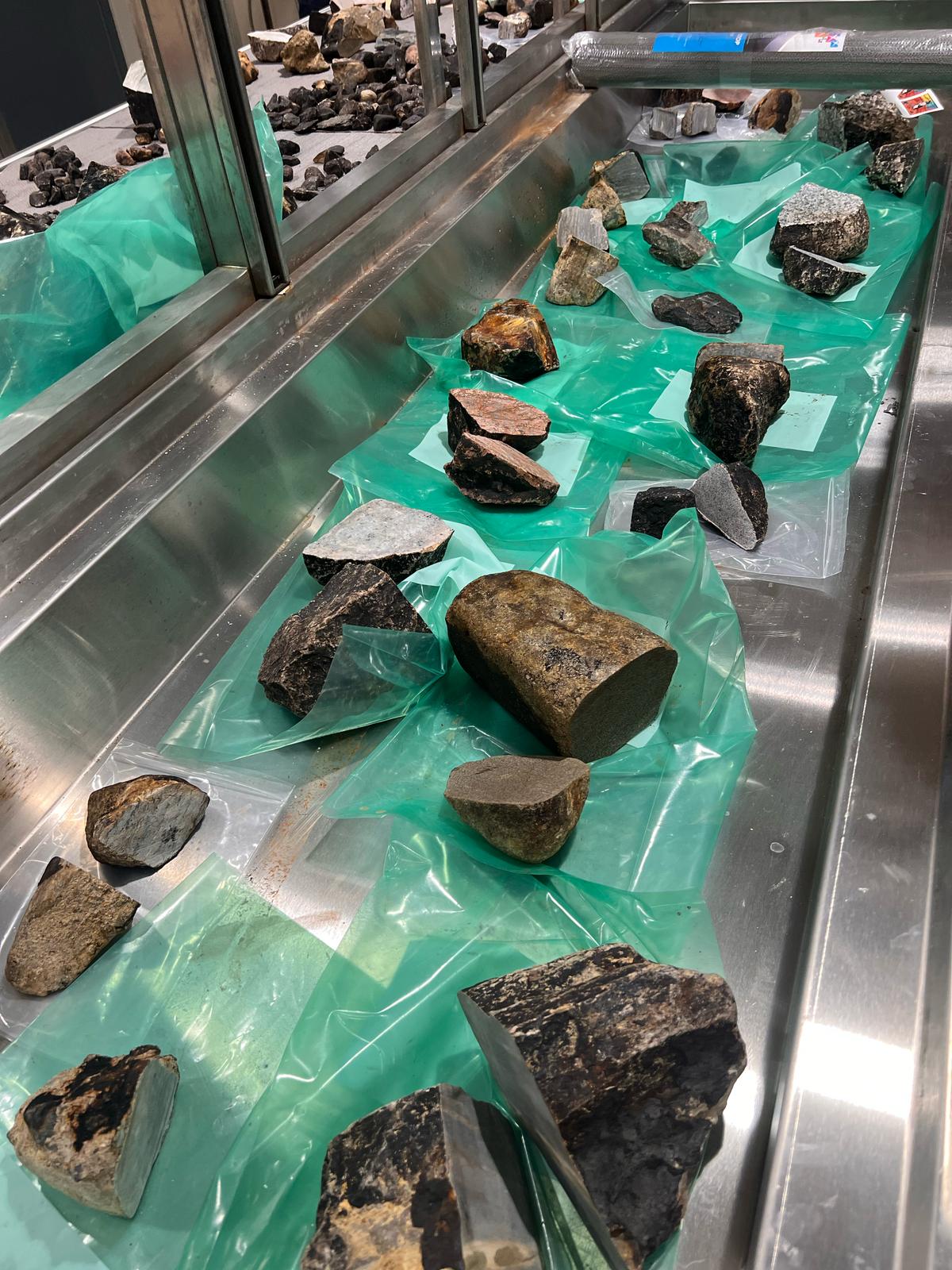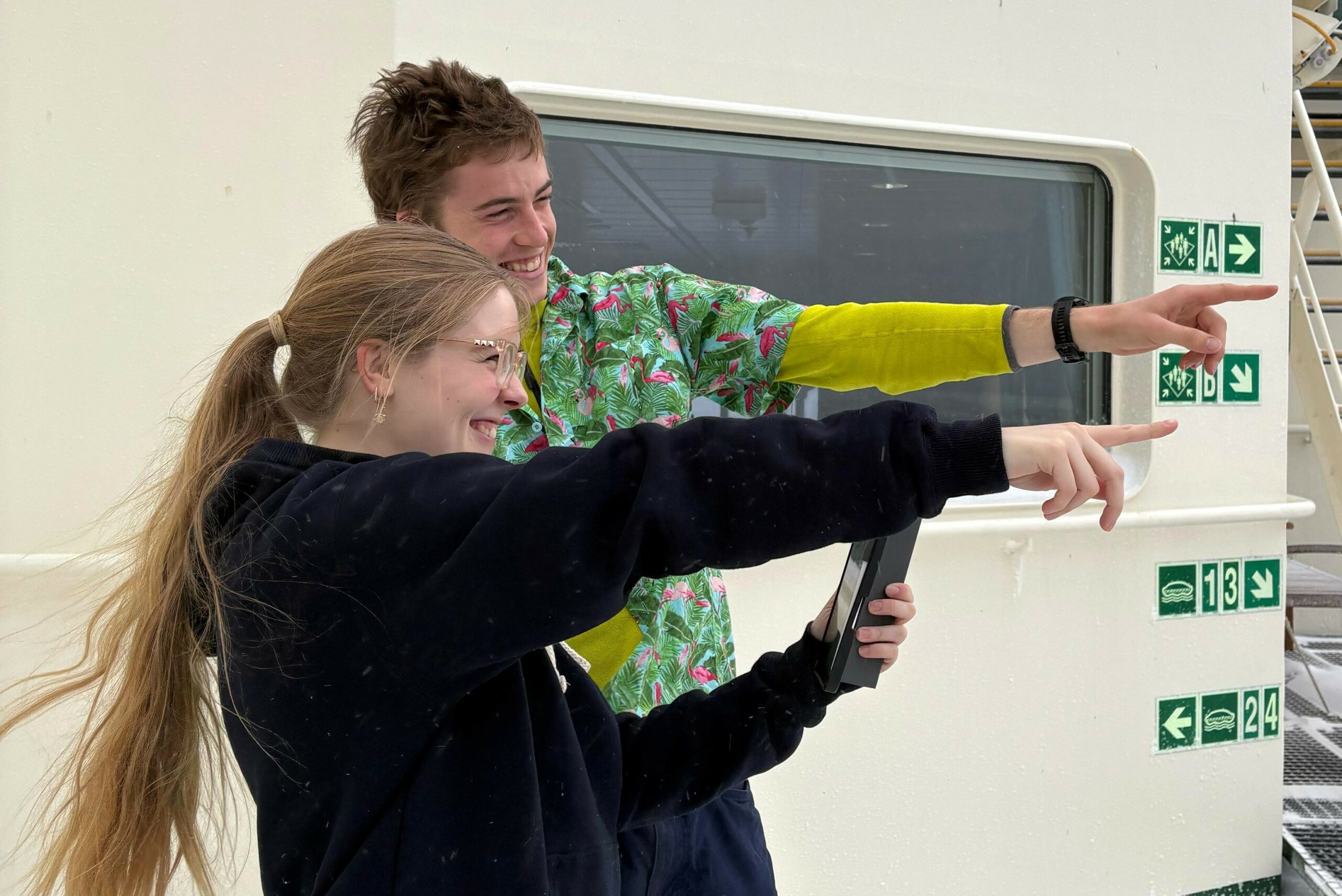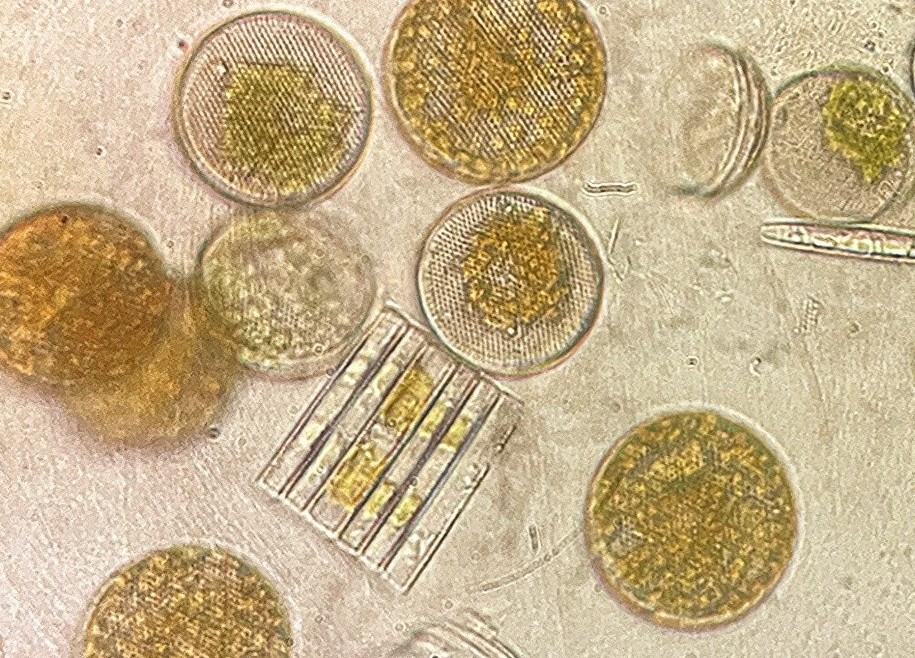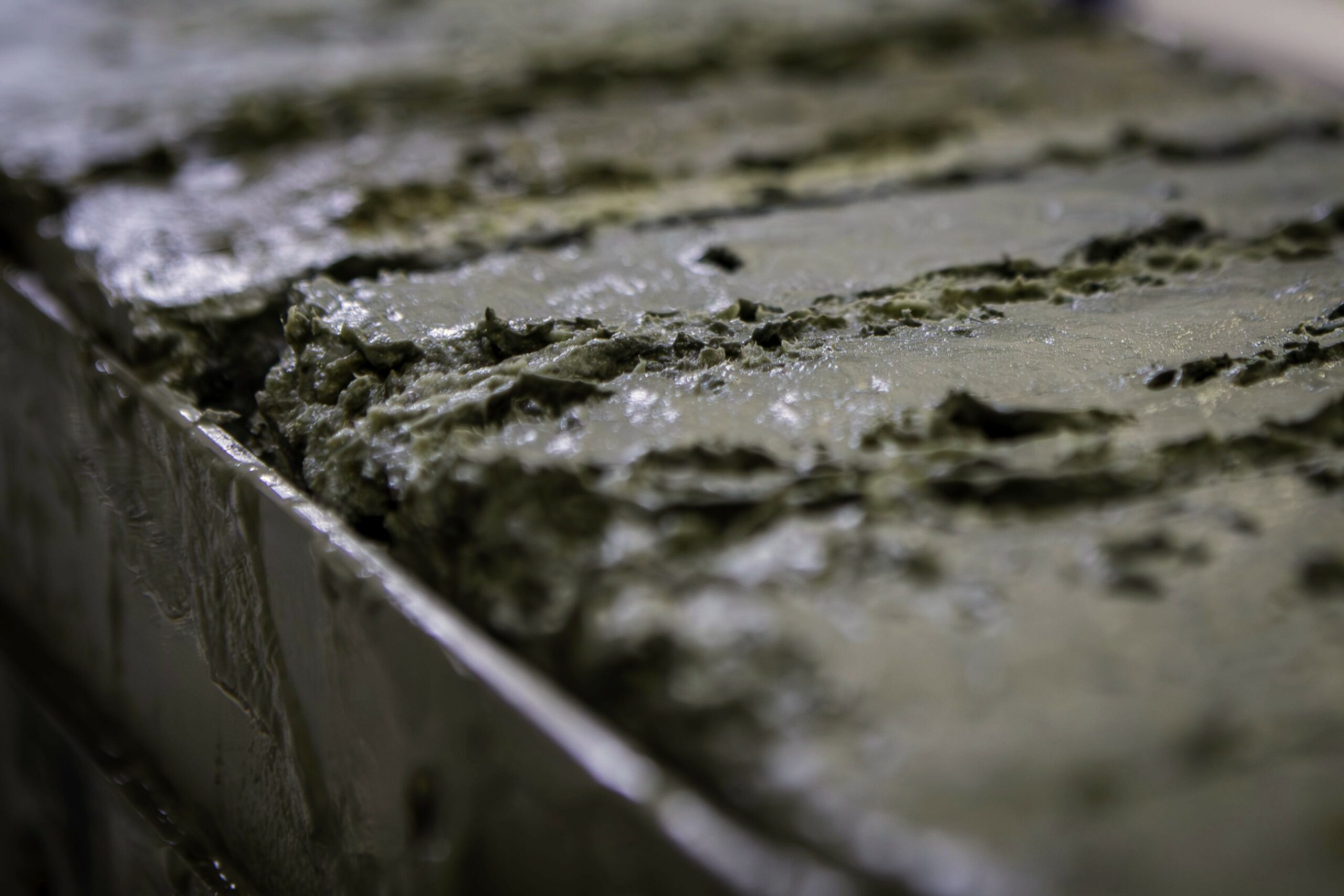Revealed in a rock dredge
By Jo Whittaker
Anticipation was high as the first dredge of the Denman Marine Voyage was deployed to a water depth of 2700 metres on the steep eastern slope of the Eastern Bruce Rise. Waiting for a dredge to come up is always exciting as we never know if there will be rocks in the bag until it comes above the water.
In this case, it was an exciting, historic moment as a good haul of rocks came onboard in the first successful dredge for the RSV Nuyina‘s first fully science-dedicated voyage. As the chain bag full of rocks was emptied on the deck, geoscientists Jo Whittaker, Katharina Hochmuth, Taryn Noble, Karin Orth and students Rachel Meyne, Jim Trihe, Molly Husdell, Amy Wells, Noah Menner, and Neve Clippendale loaded buckets to examine the catch.
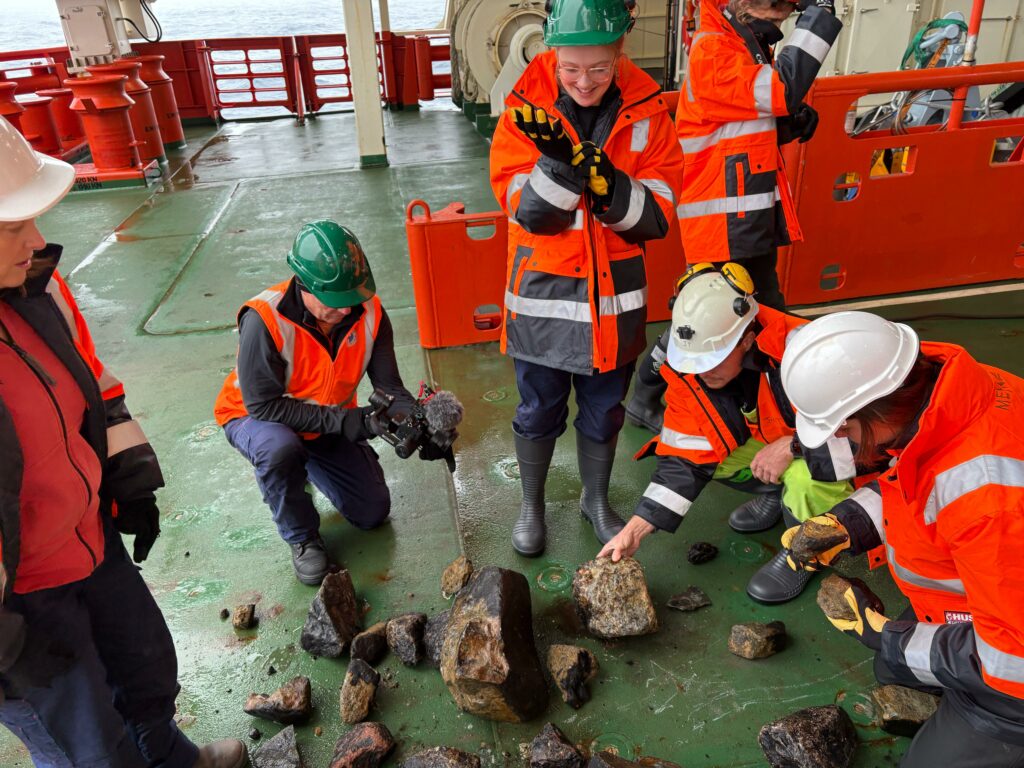
The rock dredging team examines their haul. Image: Katharina Hochmuth
The team were able to cut and describe a wide range of rocks, most of which seem to have come from beneath the Denman Glacier. These rocks will be combined with rocks collected onshore in the Denman region from last year’s terrestrial campaign (led by IMAS geologist Jacqui Halpin) with the aim of understanding what lies beneath the 3.5 km of ice of the Denman Glacier and its catchment.
Gaining a handle on the geological units of the area will improve modelling of the geothermal heatflow in the region and our understanding of melting from the glacier’s bedrock, as well as from the atmosphere.
There are some indications that the Denman region might be a particularly warm area geothermally, and this can impact on the base of glaciers. This evidence comes from the presence of a 20,000-50,000 year old volcano to the west of the Denman Glacier, and geophysical models of heat flow.
Further dredges are planned with the aim of collecting rocks from the Antarctic continent, to understand the contribution to heat flow from radioactive elements in these rocks, and to collect samples from features that may be extinct underwater volcanoes. If these underwater mountains are young volcanoes this would confirm higher heat flow in the region.
—
*Professor Jo Whittaker (IMAS/UTAS) is a Senior Scientist and a key part part of the rock dredging team for ACEAS on the Denman Marine Voyage.
